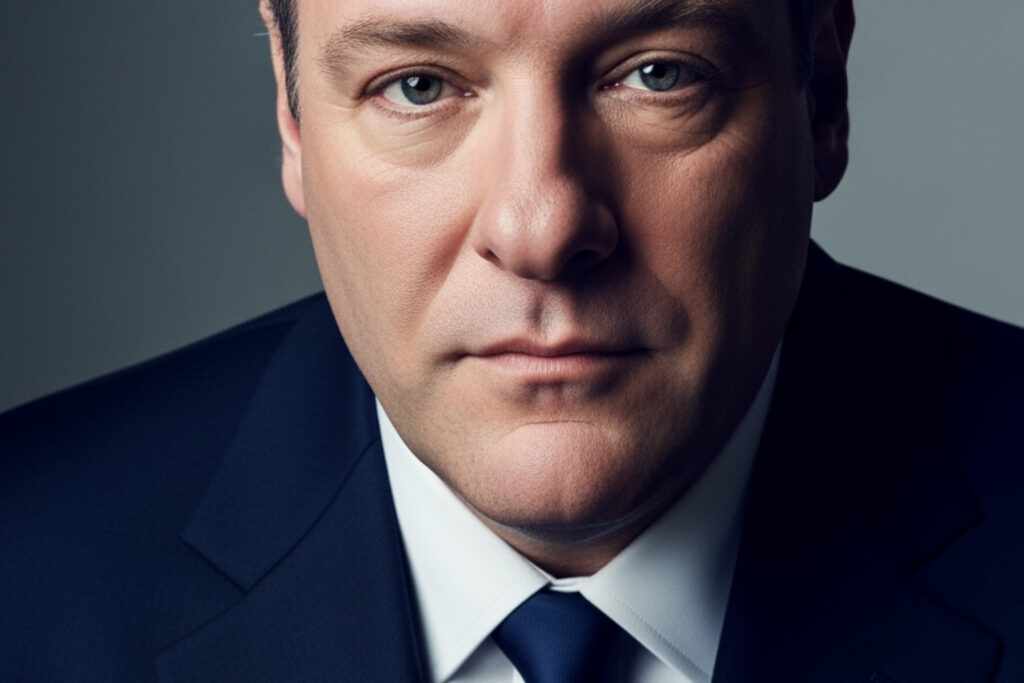Why James Gandolfini Remains a Cultural Icon
James Gandolfini was an American actor who fundamentally changed television history through his portrayal of Tony Soprano in HBO’s groundbreaking series “The Sopranos” (1999-2007). Born on September 18, 1961, in Westwood, New Jersey, Gandolfini transformed from a shy character actor into one of the most influential performers of his generation before his untimely death at age 51 in 2013.
Quick Facts About James Gandolfini:
- Birth: September 18, 1961, in Westwood, New Jersey
- Death: June 19, 2013, in Rome, Italy (heart attack)
- Height: 6’0½” (1.84 m)
- Most Famous Role: Tony Soprano in HBO’s “The Sopranos”
- Major Awards: 3 Emmy Awards, 1 Golden Globe, 3 SAG Awards
- Estate Value: $70 million at time of death
- Children: Michael Gandolfini (actor) and Liliana Ruth Gandolfini
Gandolfini’s journey from working as a bouncer and bartender in New York City to becoming television’s most celebrated anti-hero is remarkable. His breakthrough came with the 1993 film “True Romance,” where he played the brutal hitman Virgil. However, it was his nuanced portrayal of mob boss Tony Soprano that earned him worldwide recognition and helped usher in what critics call the “Golden Age of Television.”
Despite his intimidating on-screen presence, colleagues remember Gandolfini as incredibly generous and kind. As one co-star noted, “He was a big, gentle, beautiful, warm, loving human” – a stark contrast to the violent character that made him famous.
His sudden death from a heart attack while vacationing in Rome shocked the entertainment world and left an irreplaceable void in television history.
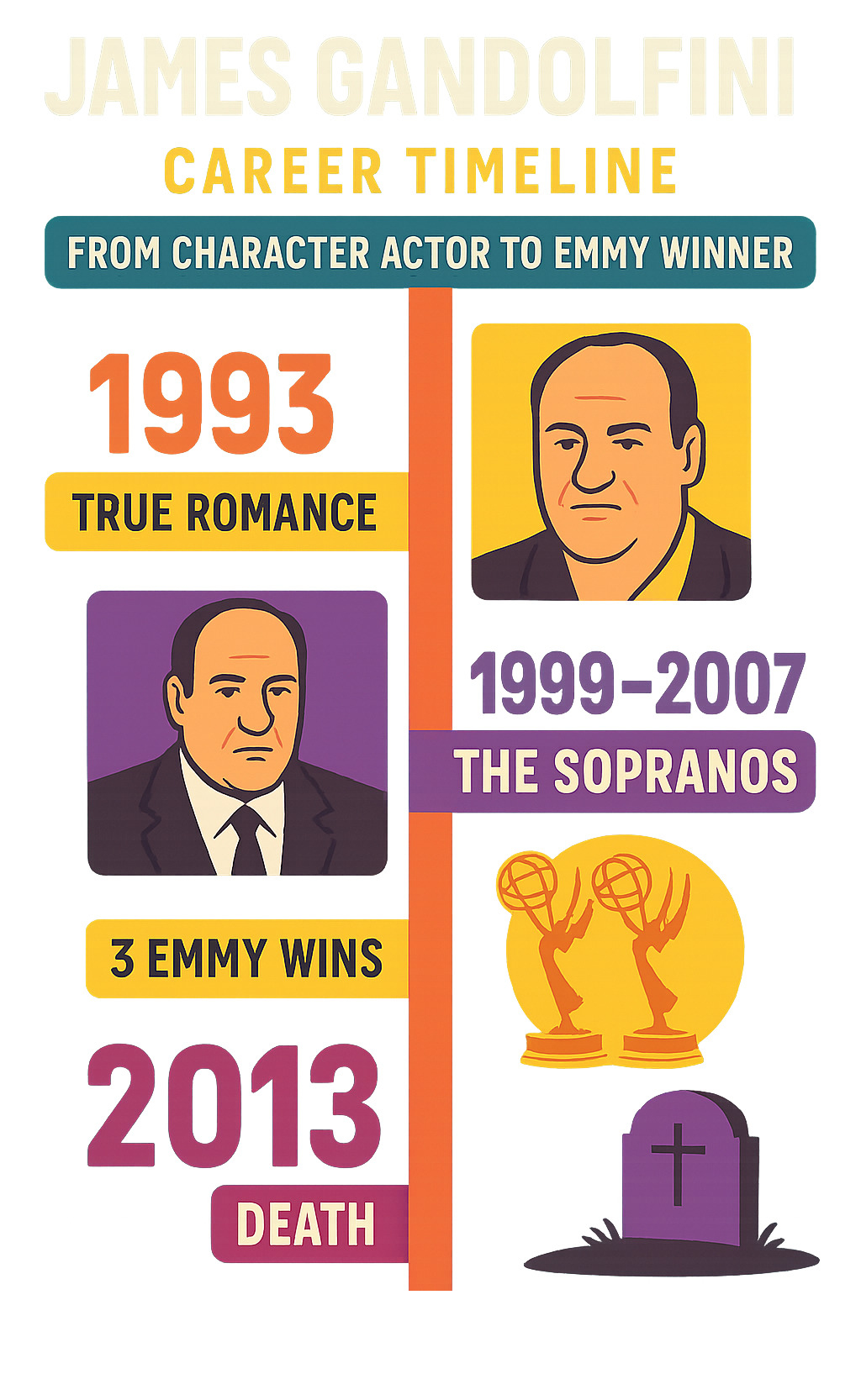
From New Jersey Roots to the New York Stage
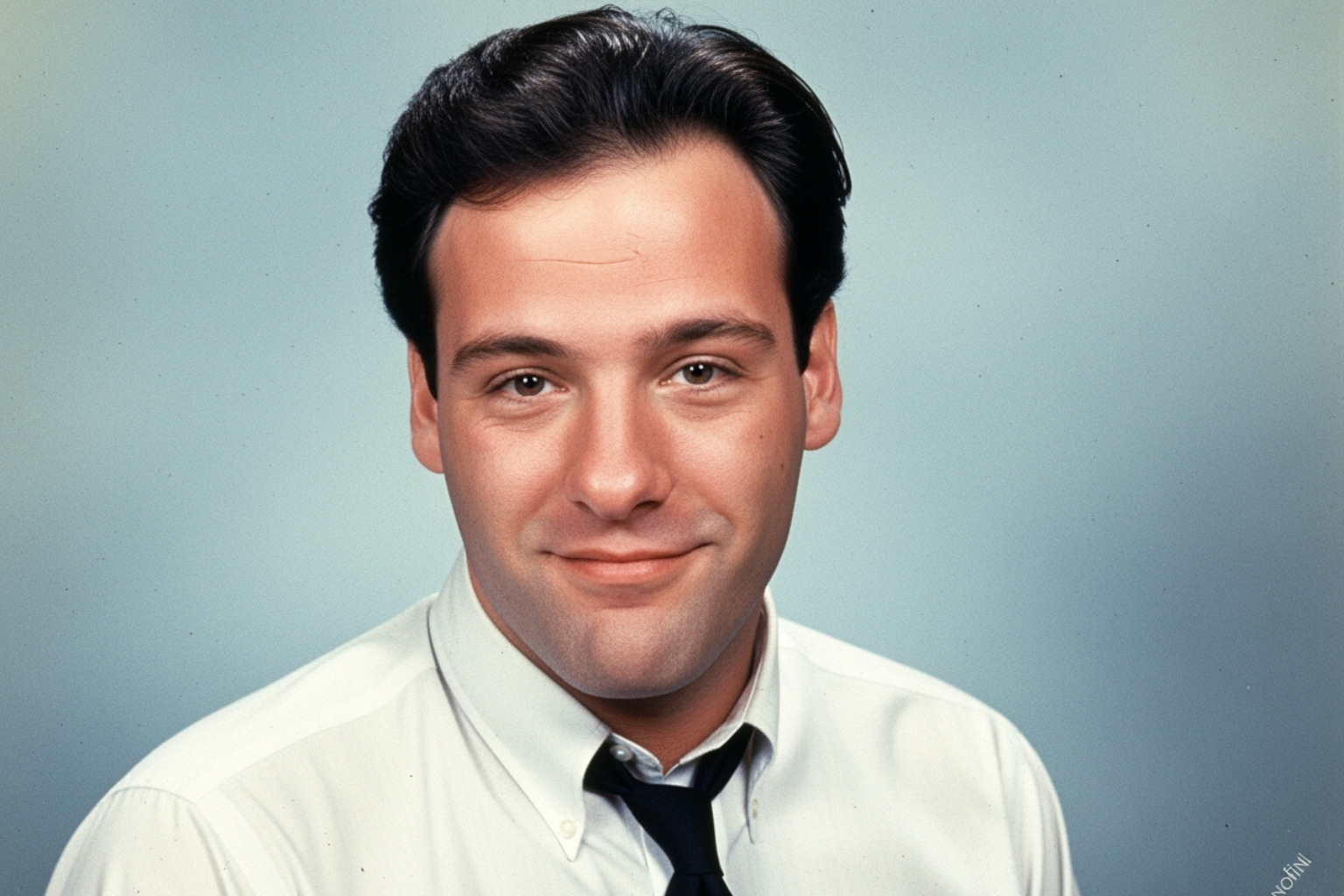
Long before James Gandolfini became television’s most famous mob boss, he was just a regular kid from New Jersey with no dreams of stardom. His journey from working-class roots to Broadway stages shows us that sometimes the most unexpected paths lead to greatness.
Early Life and Education
James Gandolfini grew up in a world that would later inspire his most memorable performances. Born on September 18, 1961, in Westwood, New Jersey, he was raised by parents who knew the value of hard work. His mother, Santa, worked in a high school cafeteria, while his father, James Joseph Gandolfini Sr., laid bricks and mixed cement before becoming head custodian at Paramus Catholic High School.
The Gandolfini family embodied the Italian-American work ethic that would later shine through in Tony Soprano’s character. Growing up in Park Ridge, young James was surprisingly popular and charming – his classmates at Park Ridge High School even voted him “Best Looking” in his senior yearbook. He also earned the playful title of “Class Flirt,” showing an early charisma that would serve him well on screen.
After high school, James Gandolfini headed to Rutgers University, where he earned his Bachelor of Arts in Communication in 1983. During college, he worked as a bouncer at an on-campus pub – a job that gave him insight into handling tough situations and reading people. These skills would prove invaluable when he later played intimidating characters who needed to feel authentic and grounded.
Finding a Passion for Acting
After graduation, James Gandolfini moved to New York City with no clear plan beyond making ends meet. He worked as a bartender and bouncer, taking whatever jobs he could find. Acting wasn’t even on his radar – he was just trying to survive in an expensive city.
Everything changed when a friend convinced him to try an acting class. Despite his initial reluctance, Gandolfini finded he had a natural gift for performance. He threw himself into studying the Meisner technique, which focuses on genuine emotional responses and truly listening to other actors. This training taught him to find truth in every moment – a skill that would make his later performances feel so real and human.
To support himself while learning his craft, Gandolfini worked various jobs around the city. His humble beginnings remind us that success often requires patience and persistence, whether you’re pursuing acting or any other passion in life.
His dedication to authentic performance was intense. Gandolfini would use physical techniques to access emotions – sometimes banging his head against walls or putting sharp rocks in his shoes to channel anger for difficult scenes. This commitment to truth in performance would become his trademark.
James Gandolfini made his Broadway debut in 1992 with a revival of “A Streetcar Named Desire,” performing alongside Jessica Lange and Alec Baldwin. Though his later stage work in “On the Waterfront” in 1995 ran for only a brief time, these experiences on Broadway gave him the foundation he needed to tackle complex characters with depth and nuance.
Little did anyone know that this shy, gentle man from New Jersey would soon revolutionize television forever.
A Formidable Presence: Breakthrough Film Roles
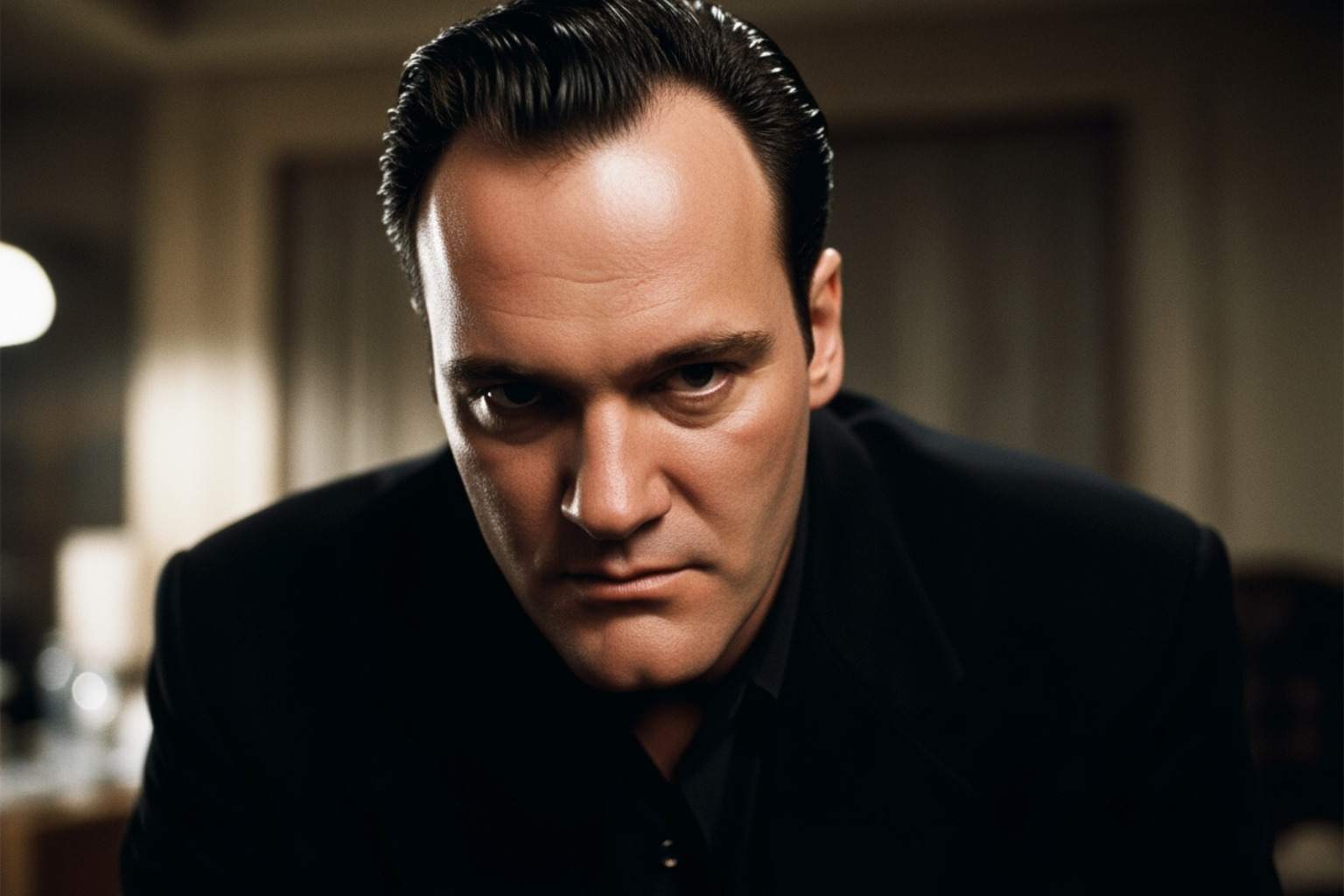
The 1990s marked a turning point for James Gandolfini as he transitioned from stage work to building a reputation as one of cinema’s most compelling character actors. His imposing 6-foot frame and natural intensity made him perfect for roles that required both physical presence and emotional depth – qualities that would soon make him a household name.
The ‘True Romance’ Scene Stealer
Everything changed for Gandolfini in 1993 when director Tony Scott cast him as Virgil, a brutal hitman in “True Romance.” This wasn’t just another small role – it was a career-defining performance that showcased his unique ability to make even the most violent characters strangely human.
The film’s most memorable scene features Gandolfini’s character in a hotel room confrontation with Patricia Arquette’s Alabama. What could have been a simple “bad guy beats up good guy” moment became something far more complex in Gandolfini’s hands. He brought an unsettling mix of professionalism and genuine menace to Virgil, making the character both terrifying and oddly sympathetic.
James Gandolfini’s commitment to authenticity was already evident in this early role. He insisted on using real physical discomfort to access the emotional intensity needed for the scene – a method that would become his trademark. Patricia Arquette later recalled how seriously he took the work, even when filming such a brutal sequence.
The performance caught the attention of critics and casting directors alike. Here was an actor who could make audiences simultaneously fear and understand his characters – a rare gift that would serve him well in future roles.
Building a Filmography
Following the success of “True Romance,” Gandolfini steadily built an impressive resume throughout the 1990s. He appeared in Crimson Tide (1995) alongside Denzel Washington and Gene Hackman, where he played a submarine crew member caught in the tension between two strong-willed commanders. His work in Get Shorty (1995) showed his ability to handle comedy, playing a bearded stuntman with just the right touch of menace.
The mid-90s brought more opportunities with The Juror (1996) and Sidney Lumet’s Night Falls on Manhattan (1996), where Gandolfini continued to refine his craft under the direction of seasoned filmmakers. His role in A Civil Action (1998) demonstrated his ability to work within ensemble casts, while 8mm (1999) paired him with Nicolas Cage in a dark thriller that pushed his range even further.
What made these performances special wasn’t just Gandolfini’s physical presence – though that certainly helped. It was his ability to find the humanity in characters who could have been simple stereotypes. Each role built upon the last, creating a foundation of experience that would prove invaluable when television came calling.
By the end of the 1990s, James Gandolfini had established himself as the go-to actor for complex, morally ambiguous characters. Little did anyone know that his greatest role was just around the corner.
The Role of a Lifetime: The Legacy of James Gandolfini and The Sopranos
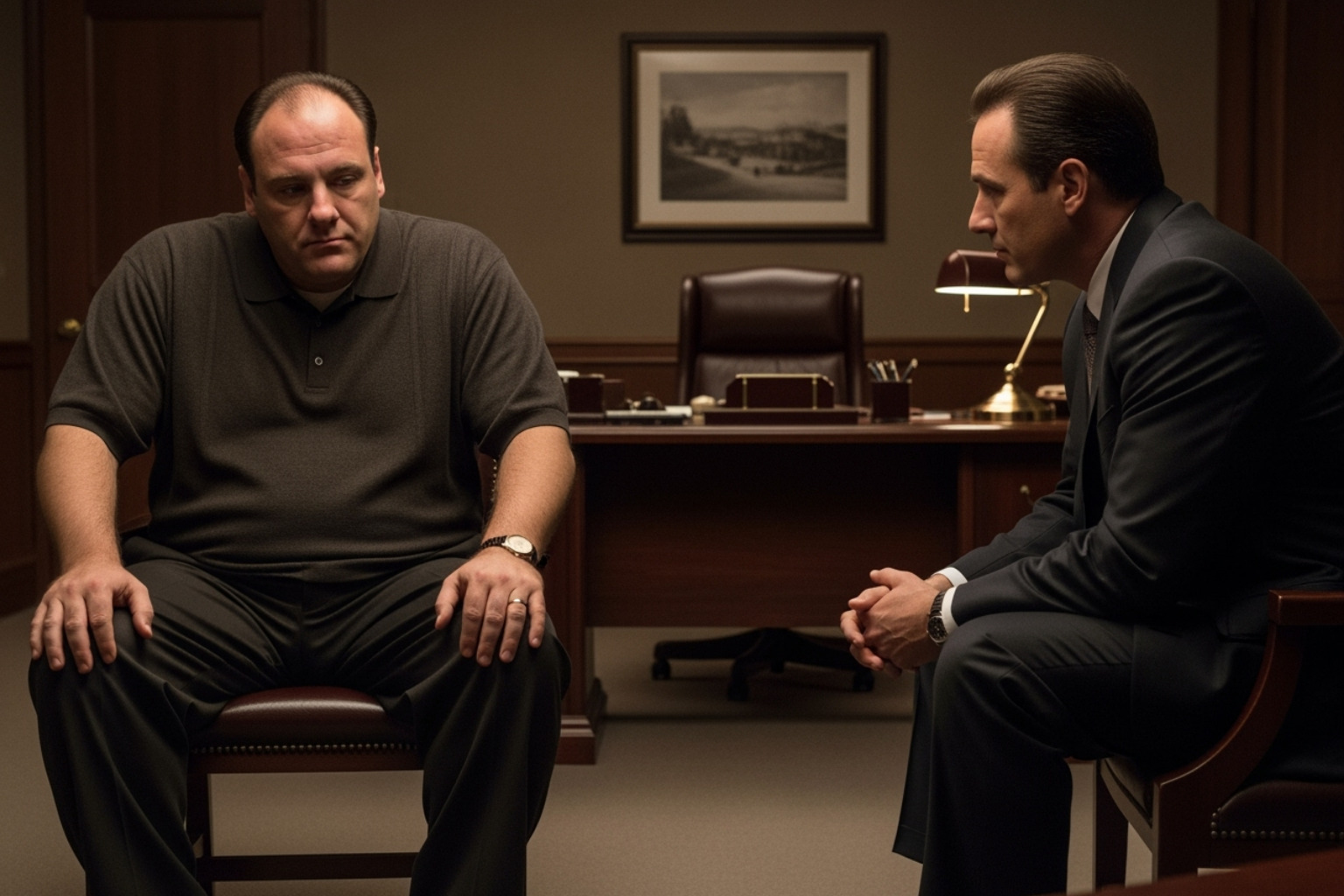
When David Chase pitched “The Sopranos” to HBO, he had a wild idea: what if a mob boss went to therapy? What if this tough guy suffered panic attacks and struggled with the same family drama as any suburban dad? It was a concept that needed the perfect actor to pull it off.
Enter James Gandolfini, who almost didn’t take the role that would define his career.
The Nuanced Performance of James Gandolfini as Tony
James Gandolfini’s audition for Tony Soprano was anything but typical. He actually walked out halfway through, feeling uncertain about the complex character. Later that night, sitting in his car, he finished reading the script and realized he had found something special.
Tony Soprano was unlike any TV character audiences had seen before. He was a mob boss who had panic attacks in his bathrobe while chasing ducks in his pool. He was a killer who cried watching “The Godfather” with his teenage daughter. Gandolfini understood that Tony’s contradictions were what made him human.
The performance was nothing short of extraordinary. James Gandolfini could shift from tender father to terrifying boss within seconds, often in the same scene. He brought volcanic rage and surprising vulnerability to a character who could have easily been a cartoon villain.
The accolades poured in. Gandolfini won three Emmy Awards for Outstanding Lead Actor in a Drama Series in 2000, 2001, and 2003. He also earned one Golden Globe Award for Best Actor in a Television Series – Drama in 2000, plus three Screen Actors Guild Awards for his outstanding performance.
His dedication to the role was legendary. Like his early film work, Gandolfini used physical techniques to access Tony’s emotional states. He would bang his head against walls or put sharp objects in his shoes to find the character’s anger and pain.
The financial recognition matched the critical acclaim. By the final season, Gandolfini was earning $1 million per episode, making him one of television’s highest-paid actors. For Season 5 alone, he earned $13 million – a testament to how essential he was to the show’s success.
What made the performance so compelling was Gandolfini’s ability to find the ordinary man within the extraordinary circumstances. As David Chase, the show’s creator, put it: “Without Jim Gandolfini, there is no Sopranos. There is no Tony Soprano.”
In a 2004 Inside the Actors Studio interview, Gandolfini revealed his thoughtful approach to the character, discussing how he drew from his own experiences and observations to create Tony’s complex psychology.
Impact on Television History
“The Sopranos” premiered in January 1999 and ran for six groundbreaking seasons until 2007. James Gandolfini’s portrayal of Tony Soprano didn’t just entertain audiences – it changed television forever.
The show ushered in what critics call the “Golden Age of Television.” Gandolfini’s complex anti-hero paved the way for equally complicated protagonists in shows like “Breaking Bad,” “Mad Men,” and “Deadwood.” These characters shared Tony’s moral ambiguity and psychological depth.
Before Tony Soprano, television heroes were mostly clear-cut good guys. Gandolfini showed that audiences were hungry for more realistic, flawed characters who reflected the complexity of real life. This shift redefined what cable drama could be.
The series finale remains one of television’s most talked-about moments. The controversial cut to black during a family dinner at Holsten’s diner sparked endless debate. Was Tony killed? Did he live? The ambiguity was perfect for a character who had always existed in moral gray areas.
Even today, fans make pilgrimages to the actual Holsten’s diner in Bloomfield, New Jersey, to sit in the booth where that final scene was filmed. It’s a testament to how deeply James Gandolfini and his character touched popular culture.
The show’s influence extends far beyond entertainment. It proved that television could match or exceed movies in terms of storytelling, acting, and production values. This change has shaped how we consume entertainment today, from binge-watching to the rise of prestige television.
James Gandolfini didn’t just play Tony Soprano – he created a cultural phenomenon that continues to influence television and our understanding of complex characters more than a decade after the show ended.
The Man Behind the Mask: Personal Life and Passions
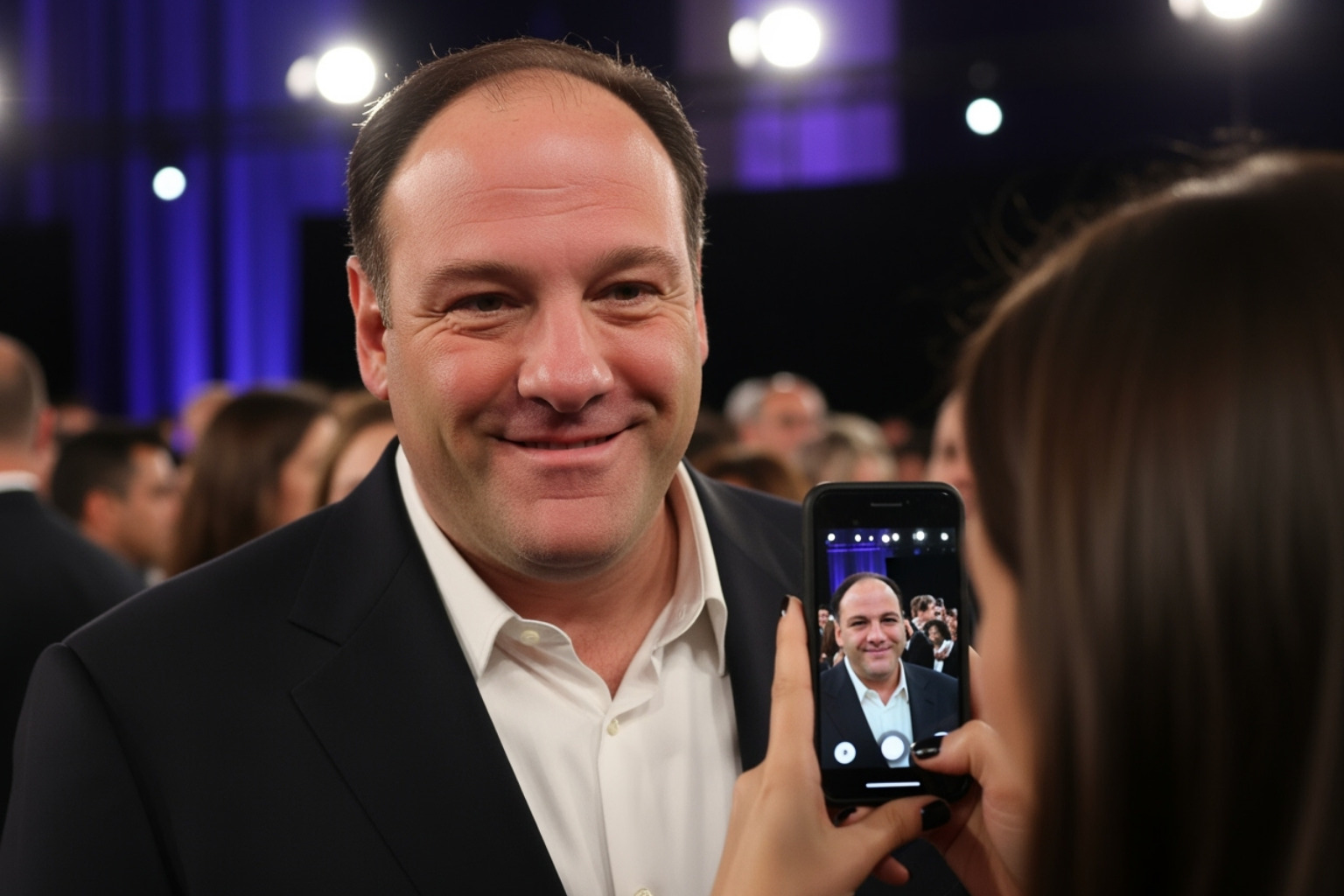
The contrast between Tony Soprano and James Gandolfini couldn’t have been more striking. While his character was ruthless and explosive, the real man was gentle, thoughtful, and surprisingly shy. Friends and colleagues consistently described him as someone who would light up when talking about his children, yet became uncomfortable when the spotlight turned to his own success.
James Gandolfini often joked about his own appearance, calling himself “a 260-pound Woody Allen” – later updating it to 295 pounds with characteristic self-deprecation. This humor masked a deeper discomfort with celebrity that stayed with him throughout his career. Despite his fame, he remained remarkably grounded, preferring quiet family time to Hollywood glamour.
His generosity was legendary in the industry. When he finded that he was the only “Sopranos” cast member receiving DVD royalties, he didn’t just complain – he took action. Gandolfini called his co-stars into his trailer and wrote personal checks from his own earnings. Drea de Matteo received around $36,000, which she initially tried to refuse until he insisted she take it.
Family and Relationships
Family was everything to James Gandolfini. His first marriage to Marcy Wudarski in 1999 gave him his son Michael, born on May 10, 1999. Though the couple divorced in 2002, Gandolfini remained a devoted father who never missed an opportunity to talk about his children.
In 2008, he found love again with Deborah Lin, a former model and actress. Their wedding was a private affair, reflecting his preference for keeping personal matters out of the public eye. Their daughter, Liliana Ruth Gandolfini, was born in October 2012, bringing him immense joy during his final months.
Gandolfini would passionately encourage friends to have children, calling them the “biggest joy” of his life. His face would transform when discussing Michael and Liliana – the tough-guy exterior melting away to reveal a man completely devoted to fatherhood.
Despite his Hollywood success, he never forgot his New Jersey roots. Gandolfini maintained close friendships with his high school buddies, often bringing them as his guests to red carpet events. This loyalty extended to keeping his primary residence in New Jersey rather than moving to Los Angeles like many actors.
The Lasting Influence of James Gandolfini Beyond Acting
James Gandolfini’s compassion extended far beyond his family and friends. He used his success to shine light on important social issues, particularly the struggles of military veterans. Through his production company Attaboy Films, he created powerful documentaries that gave voice to those often overlooked.
His “Alive Day Memories: Home from Iraq” in 2007 featured intimate interviews with disabled Iraq War veterans. The title refers to the day a soldier survives what should have been a fatal injury. Gandolfini approached these interviews with remarkable sensitivity, allowing veterans to share their stories without judgment or sensationalism.
Following this success, he produced “Wartorn: 1861-2010,” which examined PTSD throughout American military history. These projects revealed his deep empathy and social consciousness – qualities that made him such a compelling actor but also drove him to use his platform for good.
His advocacy for veterans wasn’t just professional – it was personal. Gandolfini was genuinely moved by their stories and committed to raising awareness about the physical and emotional costs of war. This dedication to causes beyond himself showed the depth of character that made him beloved by everyone who knew him.
Just as he brought authenticity to his roles, Gandolfini approached his philanthropic work with genuine care and attention to detail. His legacy extends far beyond entertainment, touching the lives of veterans and their families who found their voices through his documentaries.
A Sudden Loss and Posthumous Honors
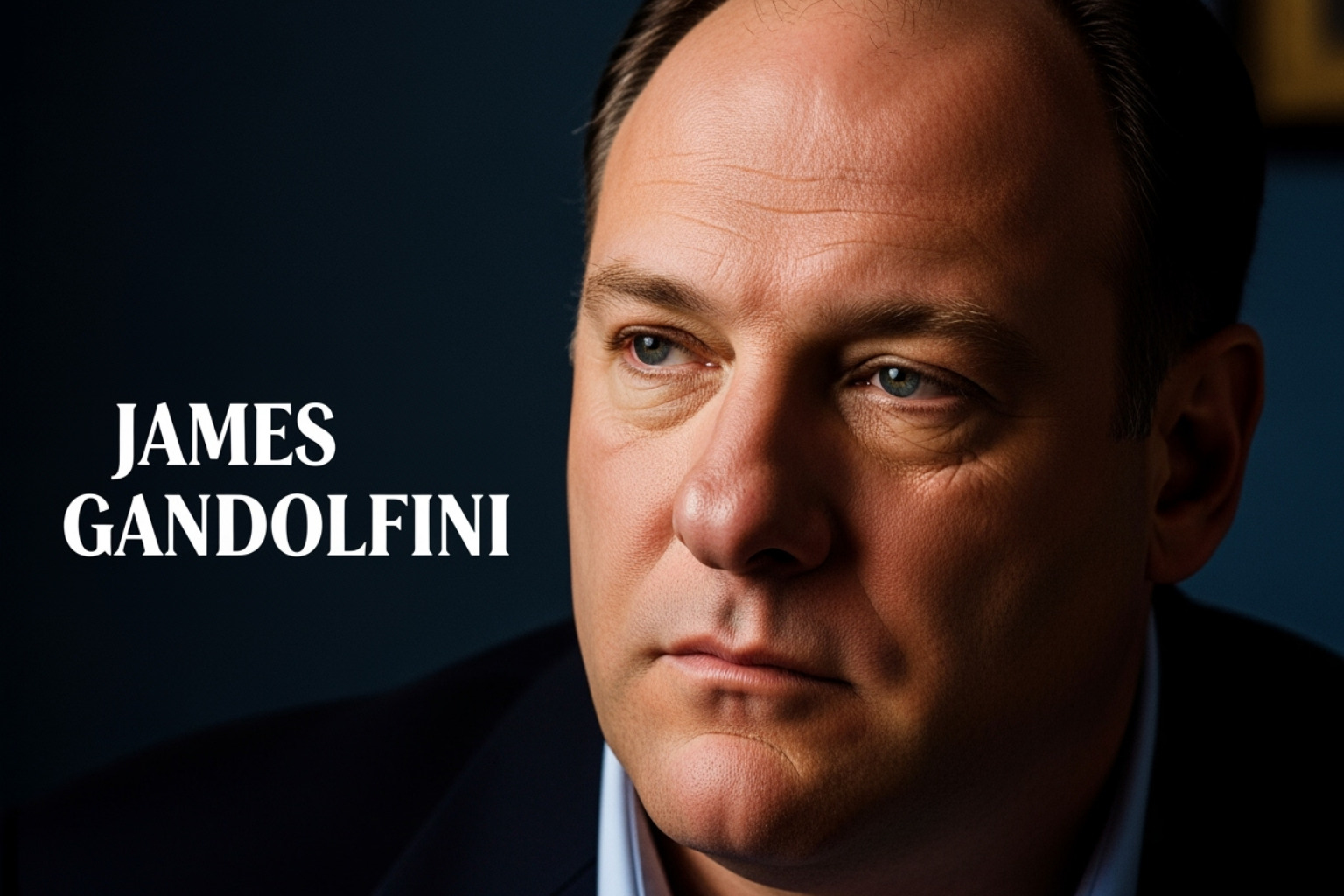
The world lost a gentle giant on June 19, 2013, when James Gandolfini passed away suddenly during what should have been a joyful father-son vacation in Rome. The news sent shockwaves through Hollywood and beyond, leaving fans and colleagues struggling with the reality that television’s most beloved anti-hero was gone at just 51 years old.
Final Days and Untimely Passing
James Gandolfini had traveled to Italy with his 14-year-old son Michael to attend the Taormina Film Festival in Sicily, where he was scheduled to receive an award. It was meant to be a special trip – quality time with his son combined with professional recognition. The two had been enjoying their Italian trip, exploring Rome’s historic streets and sharing meals together.
On that fateful June evening, Gandolfini suffered a massive heart attack in his hotel room at the Boscolo Exedra Roma. His son Michael finded him unconscious and immediately called for help. Despite frantic efforts by paramedics and hospital staff, Gandolfini was pronounced dead later that evening.
The autopsy revealed that he had died from a heart attack, with contributing factors including the intense Roman heat and a recent heavy meal. For someone who had seemed so full of life and energy, the suddenness of his passing was devastating to comprehend.
News of his death spread rapidly across the globe. New Jersey Governor Chris Christie ordered all state buildings to fly flags at half-staff in honor of the Garden State’s most famous son. Broadway theaters dimmed their marquee lights – a tribute typically reserved for stage legends. Even Bruce Springsteen dedicated a performance of “Born to Run” to Gandolfini during a concert.
The funeral service on June 27, 2013, at the Cathedral of St. John the Divine in New York City was a testament to the impact he had on people’s lives. Hundreds of mourners gathered, including his entire “Sopranos” family and countless others whose lives he had touched through his work and generosity.
Final Works and Lasting Tributes
James Gandolfini’s final completed film, “Enough Said,” became a beautiful farewell to his artistry. Released posthumously in 2013, this romantic comedy-drama starring Julia Louis-Dreyfus showcased a completely different side of Gandolfini’s talent. He played a gentle, divorced father navigating the complexities of middle-aged romance – a role that earned the film an impressive 95% rating on Rotten Tomatoes.
The performance was a revelation for many who knew him primarily as Tony Soprano. Here was Gandolfini being vulnerable, funny, and deeply human in ways that reminded audiences of his incredible range. The role earned him posthumous Screen Actors Guild Award nominations, proving that his talent extended far beyond the tough-guy characters that made him famous.
His other posthumous release, “The Drop” (2014), featured him alongside Tom Hardy in a crime thriller that demonstrated his continued ability to bring depth and authenticity to complex characters. Even in these final performances, Gandolfini’s commitment to his craft remained unwavering.
The honors that followed his death reflected the profound impact he had on both his home state and the entertainment industry. In 2014, James Gandolfini was posthumously inducted into the New Jersey Hall of Fame, recognizing his contributions to arts and culture. His hometown of Park Ridge renamed a section of Park Avenue “James Gandolfini Way” in his honor, ensuring that future generations would remember the boy who became a legend.
In 2022, the Montvale service area on the Garden State Parkway was also renamed in his memory, creating a lasting tribute along the highway that connects the communities he called home.
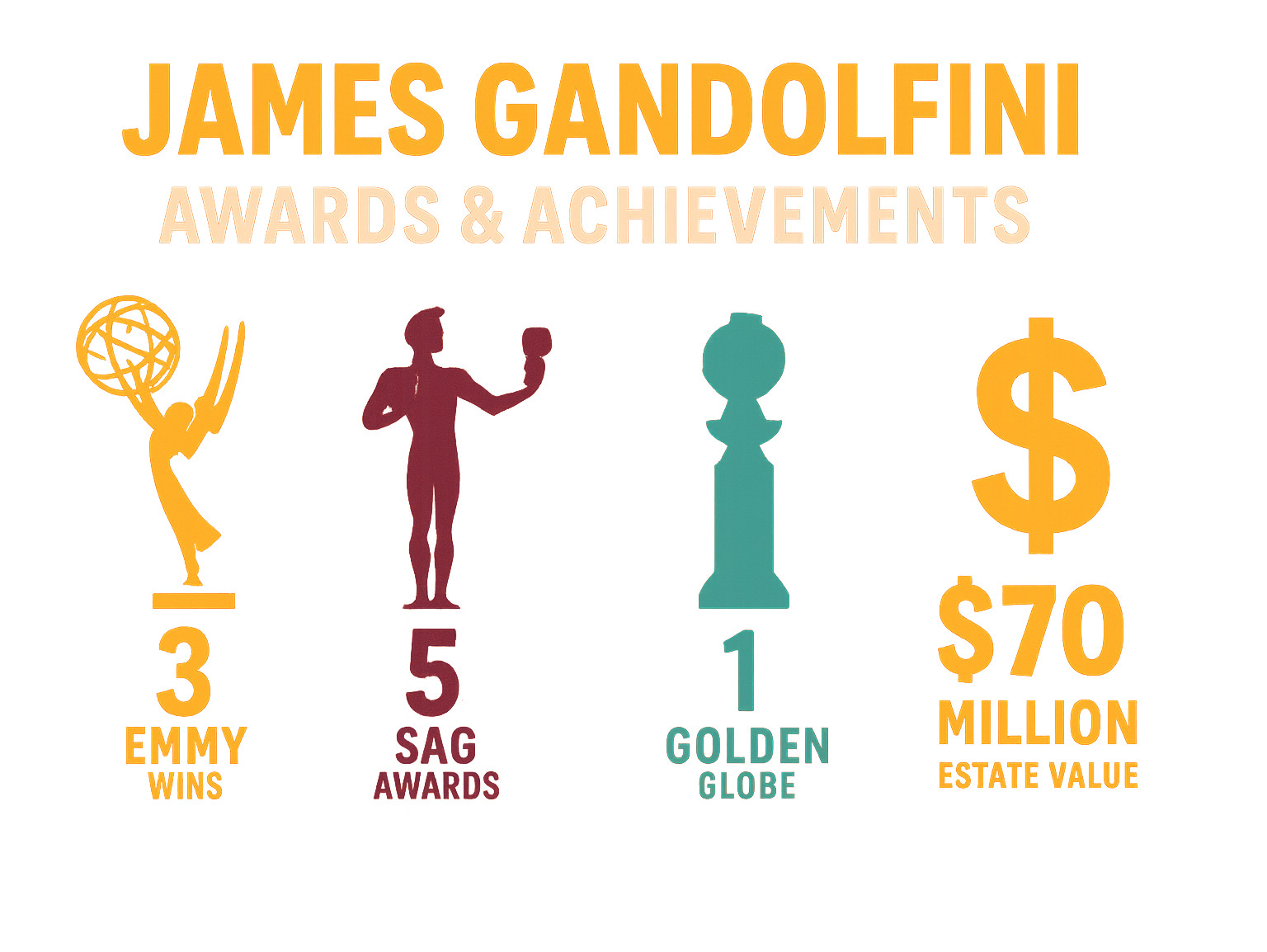
Frequently Asked Questions about James Gandolfini
What was James Gandolfini’s net worth at the time of his death?
James Gandolfini’s estate was valued at approximately $70 million when he passed away in 2013. This impressive wealth came primarily from his groundbreaking work on “The Sopranos,” where his salary evolved dramatically over the show’s six-season run.
By the final season, Gandolfini was earning an astounding $1 million per episode – making him one of television’s highest-paid actors at the time. For Season 5 alone, he brought home $13 million. These numbers reflect not just his talent, but the cultural phenomenon that “The Sopranos” had become.
What made Gandolfini truly special wasn’t just his earnings, but his generosity with them. When he finded that he was the only cast member receiving a percentage of DVD sales, he literally called his co-stars into his trailer and wrote them checks from his own pocket. This kind of authentic kindness – much like the wellness community’s emphasis on supporting one another – showed the man behind the intimidating character.
How did James Gandolfini’s son, Michael, honor his father’s legacy?
Michael Gandolfini has honored his father’s memory in the most meaningful way possible – by stepping into the role that defined James Gandolfini’s career. In 2019, Michael was cast to play young Tony Soprano in “The Many Saints of Newark,” the highly anticipated prequel film to “The Sopranos.”
The preparation process was both touching and intense. Michael studied his father’s work extensively, watching episodes repeatedly to understand Tony’s mannerisms, speech patterns, and emotional rhythms. He worked closely with the film’s creators to capture not just the character, but the essence of what made his father’s performance so compelling.
The casting felt both natural and poignant to fans. It allowed the Gandolfini family to maintain their connection to the character that brought James Gandolfini worldwide recognition, while giving Michael the opportunity to honor his father’s artistic legacy in a deeply personal way.
What were some of James Gandolfini’s most acclaimed roles outside of The Sopranos?
While Tony Soprano will always be James Gandolfini’s defining role, he delivered several other memorable performances that showcased his remarkable range as an actor.
His breakthrough came with “True Romance” (1993), where he played Virgil, a brutal hitman. This role launched his film career and remains iconic among cinema fans. The intense hotel room fight scene demonstrated his ability to be simultaneously terrifying and oddly sympathetic.
His final completed film, “Enough Said” (2013), earned him widespread critical acclaim and a 95% rating on Rotten Tomatoes. Playing opposite Julia Louis-Dreyfus, Gandolfini portrayed a gentle, divorced father – a performance that earned him a posthumous SAG Award nomination and showed his talent for romantic comedy.
Other notable performances included his sensitive portrayal of a grieving father in “Welcome to the Rileys” (2010) and his role as CIA Director Leon Panetta in “Zero Dark Thirty” (2012). He also brought unexpected depth to his character in “The Mexican” (2001), where he played a gay hitman with surprising nuance.
These roles proved that James Gandolfini was far more than just Tony Soprano – he was a versatile actor capable of bringing authenticity and emotional depth to any character he portrayed.
Conclusion
James Gandolfini was far more than just an actor who happened to play one of television’s most memorable characters. He was a transformative artist who fundamentally changed what we expect from television drama, a generous soul who lifted up everyone around him, and a devoted father who found his greatest happiness in his children’s laughter.
When James Gandolfini brought Tony Soprano to life, he didn’t just create entertainment – he revolutionized an entire medium. By pouring unprecedented psychological depth into an anti-hero character, he helped create the blueprint for the complex, morally ambiguous protagonists that define today’s golden age of television. Shows like Breaking Bad and Mad Men exist because Gandolfini proved audiences were hungry for characters who were both deeply flawed and utterly human.
But perhaps what’s most remarkable is how those who knew him best remember not his professional triumphs, but his extraordinary kindness. In an industry often driven by ego and competition, James Gandolfini stood out for his humility and his genuine desire to share his success with others. Whether he was writing checks to his Sopranos co-stars from his own earnings or quietly supporting veterans through his documentary work, he understood that true success means lifting others up.
His legacy lives on in beautiful ways. His son Michael has stepped into acting, honoring his father’s memory by playing young Tony Soprano in The Many Saints of Newark. The documentaries he produced continue raising awareness about veterans’ struggles. And countless actors and creators still draw inspiration from his fearless commitment to emotional truth.
The man who once jokingly called himself “just a dumb, fat guy from Jersey” became one of the most influential performers of his generation. He proved that the most powerful performances don’t come from artifice or technique alone, but from genuine human connection and the courage to be vulnerable.
At Beyond Beauty Lab, we believe that true beauty comes from authenticity, kindness, and the bravery to show your real self to the world – qualities that James Gandolfini embodied both on screen and off. His life reminds us that our most meaningful impact often comes not from what we achieve, but from how we treat the people around us.
For more insights on wellness, authenticity, and living a meaningful life, explore our educational resources on wellness.

